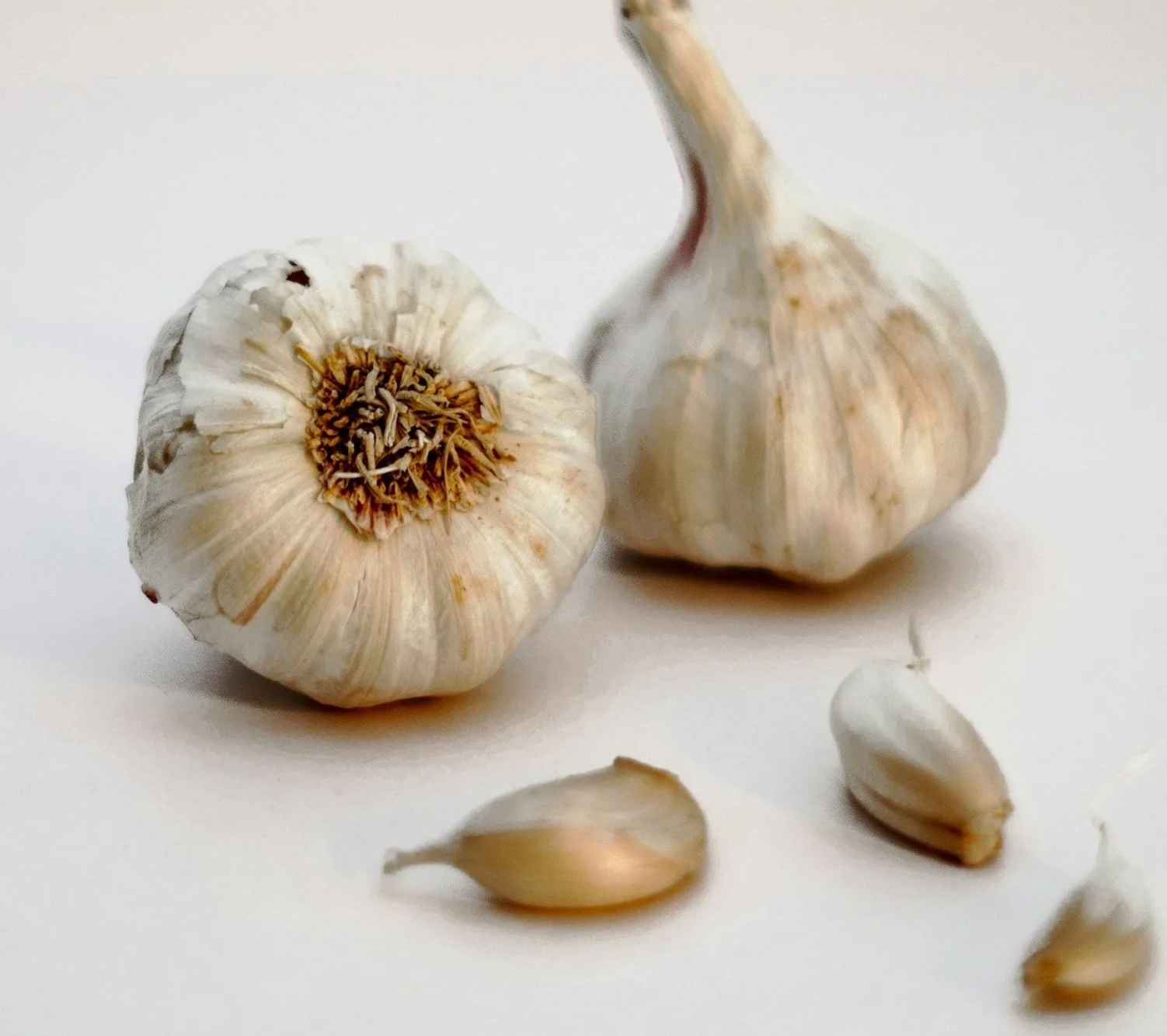Using Garlic (Allicin) to Beat SIBO - Dosage and Best Practices
Allicin in Garlic
The potent compound found in garlic, allicin, has demonstrated effectiveness against various bacteria and archaea, including those associated with mixed SIBO and IMO (the methane variant of SIBO), and even fungi. If you suspect a fungal overgrowth such as in SIFO, allicin can be a great tool as well. Let’s get into it.
SIBO, or Small Intestinal Bacterial Overgrowth, can leave you feeling bloated, uncomfortable, and frustrated. While conventional treatments for SIBO often rely on antibiotics, many people are seeking natural alternatives. Antimicrobial herbs have shown promising results in combating this condition, and garlic stands out as a particularly powerful option.
Allicin: A Natural Antibiotic Powerhouse
Allicin is a sulfur-containing compound that gives garlic its distinctive odor and powerful antimicrobial and antifungal properties. It's a natural antibiotic that can effectively target various bacteria, including those often implicated in SIBO. It is exceptionally powerful against methanogens, which are responsable for excess Methane gas as seen in Intestinal Methanogen Overgrowth.
Why Allicin Extract?
While fresh garlic is a great source of allicin, it can be problematic for those following a low-FODMAP diet due to its high content of fructans (FOS), a type of fermentable carbohydrate that can worsen SIBO symptoms. Allicin extract, however, is a concentrated form of allicin that is free of FODMAPs, making it a more tolerable option for individuals with SIBO/IMO.
Releasing Allicin from Raw Garlic
For those who tolerate FOS FODMAPs and prefer using fresh garlic, there's a simple trick to maximize allicin release:
Crush or mince the garlic: This breaks down the cell walls, releasing the allicin-producing enzyme alliinase.
Wait 10 minutes: Allow the garlic to sit for 10 minutes before cooking or consuming. This gives the alliinase time to convert alliin into allicin.
A Note on Sulphur Sensitivity
Some individuals may experience sensitivity to sulfur compounds, which can lead to digestive discomfort or headaches. This is often the case for people dealing with Hydrogen Sulfide SIBO. If you are sulfur-sensitive, it's important to start with a low dose of allicin and increase gradually, monitoring your response.
Allicin Synergy: Combining with Other Antimicrobials
Allicin's effectiveness can be further enhanced when combined with other natural antimicrobials, such as oregano. Oil of Oregano contains carvacrol and thymol, compounds that have potent antibacterial and antifungal properties. Combining these two potent antimicrobials can create a synergistic effect, increasing their overall efficacy in fighting SIBO.
Dosage Guide for Allicin
It's important to note that allicin is not a one-size-fits-all solution. Dosage and duration of use should be tailored to your individual needs and under the guidance of a qualified SIBO practitioner.
Here's a general guideline for using allicin for SIBO:
Start Low, Go Slow: Begin with a low dose of allicin and gradually increase as tolerated.
Supplementation: Consider using a high-quality allicin supplement, as fresh garlic can lose its potency quickly. The most reputable brands are providing up to 450mg per capsule. Look for Allimed or Allimax Pro (it has to be the Pro version for the right Allicin dosage), both containing Allisure AC-23.
You can find these products on Fullscript in the US and in Canada.
You can also find Allimax Pro in Canada on Amazon although I usually do not recommend sourcing supplements on Amazon if you can avoid it.Dosage Range: A typical dose is 900-2700 mg of Allisure powder (or 2 - 6 capsules) per day, divided into two to three doses.
Duration: Allicin supplementation is typically used for 4-6 weeks, but it's important to consult with your practitioner for personalized recommendations.
Important Considerations
Individual Sensitivity: Some people may experience digestive discomfort, such as heartburn or gas, when taking allicin. Start with a low dose and increase gradually, or opt for a different herb if you can’t tolerate it. If you have hydrogen sulfide SIBO, you will likely react to Allicin.
Interactions: Allicin can interact with certain medications, including blood thinners. It's crucial to inform your healthcare provider about all medications and supplements you are taking.
Long-Term Use: While allicin extract can be a valuable tool for addressing SIBO, it's not a long-term solution and should only be used during a protocol. Addressing the underlying root cause of your SIBO is essential for lasting relief.
Beyond Allicin: A Holistic Approach
While allicin can be a powerful ally in fighting SIBO, it's important to remember that a holistic approach is key for lasting gut health. Consider incorporating these strategies alongside allicin:
Dietary Modifications: Temporarily follow a low-fermentation diet to reduce the amount of fermentable carbohydrates that can feed bacteria in the small intestine.
Probiotics: Introduce beneficial bacteria strains to help restore balance to your gut microbiome.
Stress Management: Chronic stress can negatively impact gut health. Find healthy ways to manage stress, such as exercise, meditation, tapping, or spending time in nature.
Lifestyle Changes: Get enough sleep, stay hydrated, and engage in regular mild to moderate physical activity.
Working with a Functional Health Practitioner
It's crucial to work with a qualified healthcare professional, such as a functional medicine practitioner, naturopath or holistic nutritionist who specializes in gut health. I can help you create a personalized treatment plan that addresses your specific needs and symptoms, including appropriate allicin dosage and other strategies for addressing SIBO or SIFO.
🧡 Found this information useful? You can buy me a coffee / leave me a tip to support my work. 🧡

